BlackBerry Torch 9800 Review: Keeping RIM's Flame Alive
by Brian Klug on September 1, 2010 7:00 AM EST- Posted in
- Smartphones
- Torch
- BlackBerry
- Mobile
The whole device is rimmed with a shiny silver chrome that feels slippery but surprisingly doesn’t show fingerprints. So far it’s gone a solid week in my pocket without picking up any scuffs. The chrome band extends to the top and around to the back of the phone.
While we’re on the back, up top on the left is the 5 megapixel camera, on the right is the LED flash. BlackBerries have been getting more extravagant backsides as of late, with the earlier BlackBerry Bold sporting a leather battery cover. The Torch is a bit different, eschewing real leather for a soft touch grippy material that’s subtly ribbed for your, erm, hand’s pleasure. The chrome BlackBerry logo is inset and does seem to collect dust and grime as a result.
Getting the battery door off is a bit of a struggle since you can’t grip the whole phone - it wants to slide open along the same axis the battery door slides on and off along. I’ve found the best way is to align your hands so you brace against the bottom of the phone, and use both thumbs to press and push the door off. Even then, it’s just a difficult thing to get off. I guess the upside is that it won’t come off unless you really want it to.
After you’ve got that cover off, you can get access to the battery, SIM card, and microSD card. I like what they did here with putting a small rubber flap that stops the microSD card from coming out, but not making removal incredibly complicated. The Torch comes with a 4 GB class 2 SDHC card with SanDisk branding installed, which isn’t anything stellar, but not bad. The Torch uses the 4.7 Whr BlackBerry F-S1 battery, smaller than the 6 Whr battery in the Bold and other BlackBerries.
On the top of the Torch is a long chrome strip that serves as a rocker for two buttons. On the left, the button for standby/lock, on the right, the in-call mute button.
This standby button location is really my only major complaint about the design of the Torch, and is a little awkward. First of all, it’s gigantic. Second, it doesn’t take much pressure to toggle. The combination of both is that I found myself frequently turning the Torch on in my pockets. It’s simple to do, really - if you have capacious pockets like I do and plunk your phone down inside, you run the risk of accidentally turning the phone back on again. The button icons also seem like they’re silkscreened on the chrome plastic - I’m sort of worried that they’ll eventually rub off.
I realize most BlackBerry users wear a belt holster or case and thus enjoy the benefits of the magnet sensor and all that goodness, but I still just use pockets. Either way, if you aren’t using one of those, be careful that you deposit the Torch right end up, or I guarantee you’ll turn the thing right back on again as soon as it hits the bottom of your pocket.
On the front are the four capacitive buttons, and the optical trackpad. The Torch doesn’t go fully capacitive, instead requiring you to press the button down to confirm input. I like this a lot more than the alternative that seems the norm with Android devices - just taking unsanitized capacitive input. The only downside is a small seam between the screen and the buttons where dust and other grime can intrude. The optical trackpad is flawless, honestly. As an aside, the old trackball was an absolutely egregious single point of failure that spelled the end of many a BlackBerry. I find myself wondering how people even got along without a solid state sensor like what’s in here. I’ve been in conference rooms with stray BlackBerry trackball assemblies on the table before, no joke.
The right side of the phone has the 3.5mm headset jack up top, volume up down buttons, and the Torch’s sole convenience button. That’s right, there’s no convenience button on the left side. Apparently this was a design choice to simplify BlackBerry rather than something imposed by space constraints or design limitations. Whatever the cause, if you’re used to mapping things to the left side, you’ll quickly find this annoying. The buttons themselves are rather fascinating, as they’re raised rubber and have a mechanism that’s pretty sensitive.
The left side is pretty generic. You’ve got a microUSB port oriented the right way a little over halfway down the side. It makes for a bit of odd typing when trying to use and charge the handset, but everyone is just as guilty as RIM for putting a USB port on the side.
Despite such a huge departure from traditional BlackBerry design, the Torch manages to maintain that singular business feeling so trademark of RIM’s other candybar handsets. Oh and anyone remember SurePress clicky screens like the Storms had? Totally absent from the Torch, thank goodness. I definitely don’t miss that.


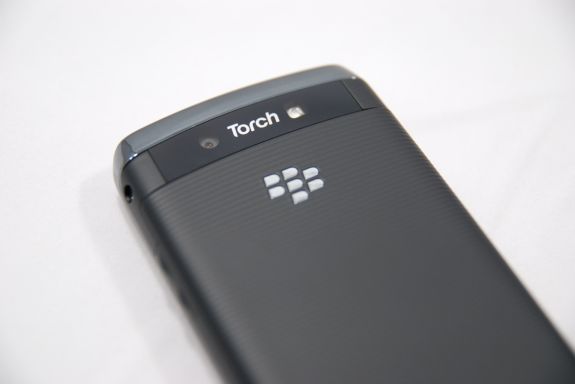
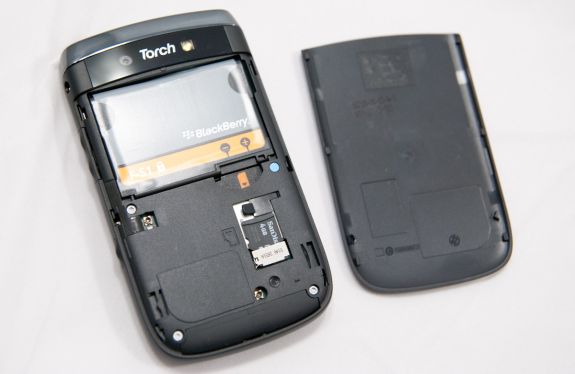
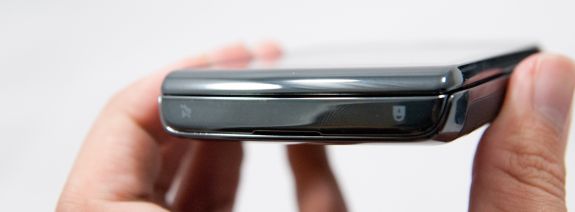
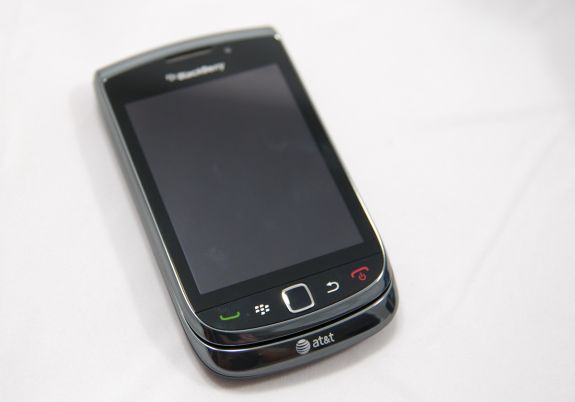
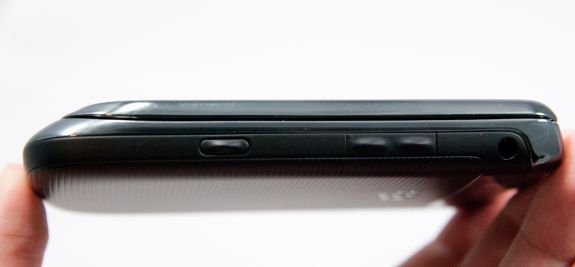
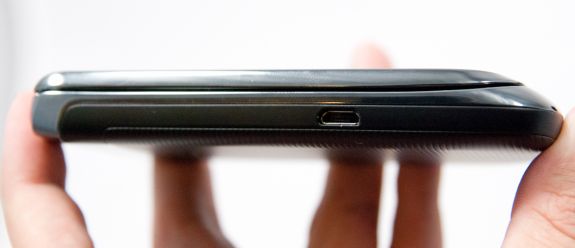








41 Comments
View All Comments
lewchenko74 - Thursday, September 2, 2010 - link
Great Review. The best of the Torch reviews so far. I really wanted to love this phone, but I don't. It concerns me greatly that the tech under the hood seems to be a generation behind, even if the software experience is generally OK.To put it into perspective, it would be like buying a Palm Pre today - with a decent WebOS but ageing computing power so to speak. You just wouldnt do it.
Im a current HTC Hero owner and cant wait to get rid of it. I was hoping the Torch may be enough, but its not.
Im glad you informed us about BIS as well. I didnt realise it contributed so much to the performance degradation of surfing the web. There really ought to be an option to browse with BIS disabled. For me, that is one of the phone's biggest flaws. Plus in the UK you normally pay about £5 more to have Internet and BBM enabled on blackberries per month too.. paying more for less it would seem, especially as most contracts these days are unlimited texts, thus rendering BBM almost useless.
Zensen - Saturday, September 4, 2010 - link
I dont think you'll read this again but doesn't your plans in the UK also include extra data?Without BIS, you dont get the secure emails, the 'unlimited' internet and BBM. I dont ever notice the slowness when it comes to emails and BBM but i can understand the 'slower' response due to the encrypting and compressing of the data through RIM servers.
Having said that, blackberry plans here also come with extra data that doesn't use the RIM servers and as such runs quite well using an alternative browser such as opera mini. I'm not sure if BIS can be turned off within the blackberry browser itself but I always assume when i change browsers im using my data plan and not BIS.
bwj - Friday, September 3, 2010 - link
It doesn't seem right to me that you test all phones with 50% brightness setting, while acknowledging that some phones are much brighter than others. Wouldn't it make more sense to set every phone to the same absolute level of brightness? 200 nits would be convenient.dusteater - Friday, September 3, 2010 - link
Well, I dumped RIM for one reason. The BB Tour. I have been using BB's for 6+ years and always loved them. Then came the Tour, which obviously had no quality control during manufacturing. The phone is so poor, I am on number 5. It has killed any confidence I had in RIM as a company able to produce a working phone. So, I will not buy the 9650 Bold like they want me to. I shouldn't have to buy the "fixed" version one year later.Off to WP7 for me.
spunlex - Friday, September 3, 2010 - link
Just wondering if you will be adding a shoot of the light box using your D80 any time soon.djc208 - Friday, September 3, 2010 - link
BB is the only company that was making non-camera smart phones. But even most of their newer devices, this one included don't seem to have non-camera versions.I've been seriously considering a smart phone but for the same price point I'd much rather have an Android device. But then I'd have to remove/destroy at least one camera (in many cases two) and void any warranties. This would have been a decent option if it was available as a non-camera version.
Zensen - Saturday, September 4, 2010 - link
What’s tricky here is that pressing the hangup button is often my way of getting out of applications and back to the launcher. In a call, when I wanted to look something up, I hit this and was disconnected - like what is supposed to happen.Is this a good or a bad point? it starts off like its about to be a negative then you finish it off by saying this is whats suppose to happen... ERR DUH!? lol
I also use the disconnect button to get out of applications ASAP but i mean the point of the hang up button is to... you know... hang up calls lol. so I'm not sure why you stating this at all. it's pretty damn obvious
Also i'm not quite sure if the speakerphone test is really as accurate as you try to make it but it is an interesting test nonetheless. It's nice to know the screen isn't as bad as people are making it out to be and as for the text messaging. im pretty sure threaded smses and the distinction of sms and mms has been around a lot longer than iphone and android. You make it sound like iphone and android created this approach.
Good to see this blackberry excels as a phone with signal attenuation. Even as 'spartan' as the keyboard is to you, unless you trying to say its simple because thats what it is, nothing flash nor does it seem to come across as harsh and rough around the edges.
I wonder if the clarity of the phone calls, volume etc have anything to do with how long you can speak on the phone otherwise its definitely not as long as the 9700 but again the battery is a lot smaller than the storm too which is surprising.
You're right about the camera, without even using it i could see how having touch for autofocus would have been great here. the hd video doesn't worry me too much but RIM took forever to put a camera on their phones to begin with so to have LED flash and a higher megapixel camera with movie is pretty good :P Still the lack of it in these times is sorely missed.
The pictures actually look quite decent on the torch, not heavily vivid as the iphone 4 looks nor as red as the nexus 1 or desaturated as the palm pre. The palm pre looks the worse when it comes to detail.
I like the HTC evo as most i think it looks more natural though leans towards the warms.
The droid 2 looks decent when it comes to blacks but its exposure is stronger and lacks a colour cast of sorts
I wonder how accurate to the still life it really is when taken by these smartphone. is the yellows more greenish as the torch and the droid seem to lean towards (but then you see the dark warm yellow of the book below which seems normal) or is it a far warmer studio shot that the rest seem to lean towards?
the strong vivid (saturated) shots of the iphone 4 will appeal to those who want it to be as eye popping as possible but its hardly realistic. the HTC evo 4, droid 2 and the torch probably rank as the ones i enjoy the most with the droid 2 and torch looking decidedly more sharper than the evo 4 which seems to have had some noise reduction applied to it.
I think the torch photos were dragged down quite a bit by this review as i think its one of the better cameras of the ones reviewed here.
great review though!
Disorganise - Saturday, September 4, 2010 - link
If only there could be an android version... I use blackberry for work and they're great at what they do - be even better if the corporate policy hadn't turned off the memory card so now you can't listen to mp3s :(I've been wanting a combo touch screen/physical keyboard phone for ages and want it to be android based. The droid 2 looks good but I'm not sure about having to flick the phone to landscape to use the keyboard - ditto the galaxy s pro; plus I live in Australia so it'll be 3 or 4 years before they hit our shores - if ever.
I like this torch -it seems to have everything except the OS. Theoretically the OS shouldn't matter (it should be transparent) but reality is that it *has* to be more restrictive with the customisations you can make and the apps you can install, simply to keep it's high security perception.
I agree with one of the previous posters - RIM could consider two distinct lines; the business phone that connects to BES etc, and a consumer phone that does not. The consumer phone could be android base and run on the same hardware - eg you have torch 9800 and torch android. this only works if RIM want to sell devices of course
Zensen - Saturday, September 4, 2010 - link
sure if they want to make more sales, slap on a android os but again that is fragmenting their business and pulling unnecessary resources away from their primary business and OS. Also the QNX OS that they have acquired.other manufacturers do this for sure but look at the fragmentation that is happening with Android - that surely isn't a good sign.
But yes, they would certainly sell more phones to consumers if they marketed it as a multimedia device and something not sorely for business users. But to take away BES makes it just another me-too android phone and how is that differentiating between their other phones. Will these android include BIS and thus BBM and push email?
I can't see how they can't just make a multimedia device and a business device in one?
Unless there's a need for a no frills business phone then yeah a higher priced multimedia device running OS 6 would be great. this was soo close, yet so far from competing in that realm. Sony tried valiantly to produce a walkman phone and a camera phone. nowadays they are just combined.
One things for sure, they will open themselves up a lot more if they joined the android party. What's stopping them from taking advantage of the windows phone 7 operating system as well...
vision33r - Sunday, September 5, 2010 - link
Android sucks for enterprise and iPhone also too. Nobody makes a better enterprise phone than Blackberry. Even Microsoft's own Windows Mobile isn't good enough as enterprise managed devices.